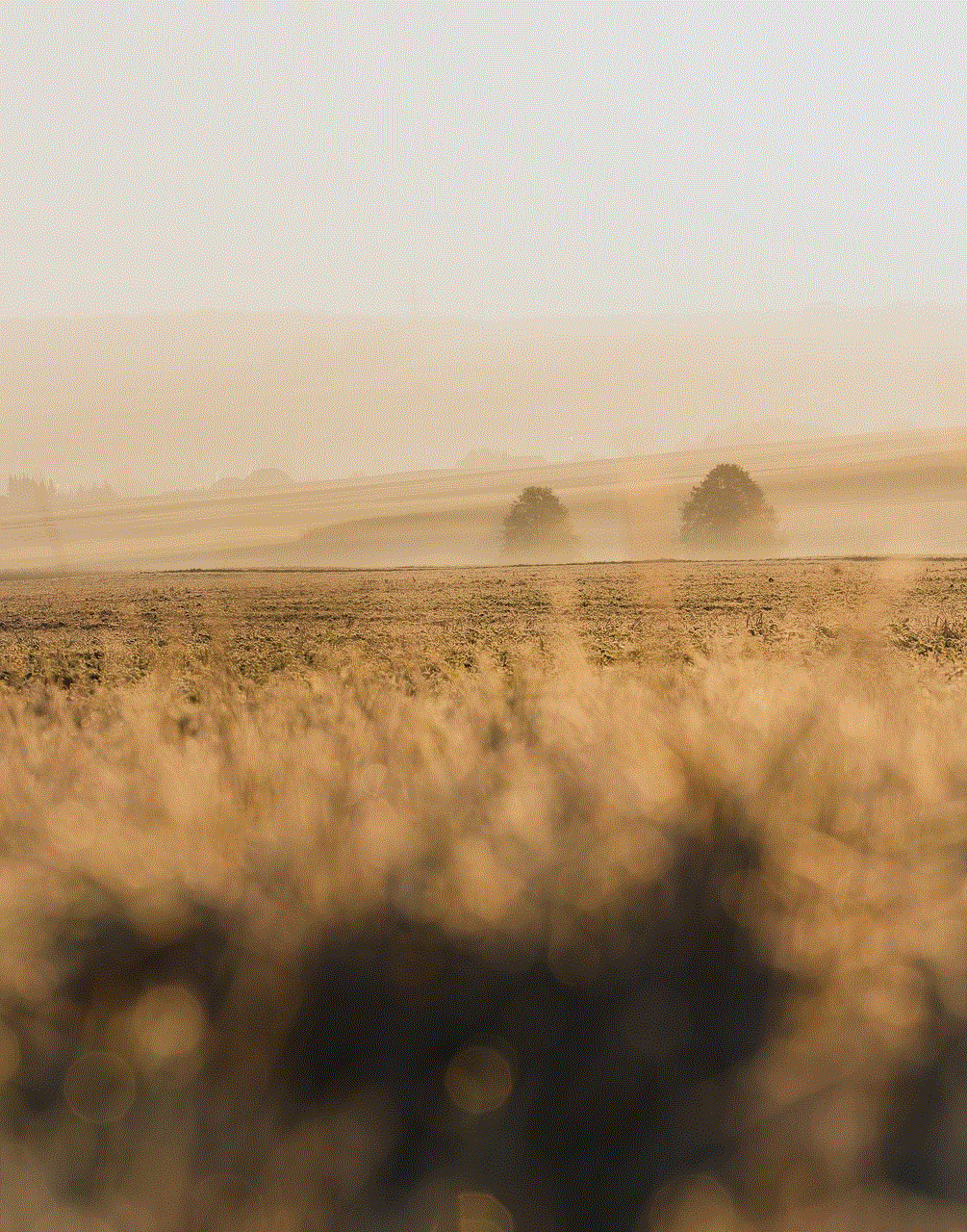father kids screentime shut his town
Title: The Impact of Excessive Screen Time on Children: A Father Takes Action to Protect His Town
Introduction:
In today’s digital age, the influence of screens and technology on our lives cannot be denied. However, the excessive use of screens, especially among children, has become a growing concern globally. Many parents and experts worry about the potential negative effects of excessive screen time on children’s physical and mental well-being, social development, and academic performance.
This article explores the inspiring story of a father who took a bold step to address the issue of excessive screen time in his town. Through his determination and community involvement, he managed to initiate positive change and create awareness about the importance of balancing screentime with other activities.
1. The Father’s Realization:
The father, let’s call him John, noticed a concerning trend among the children in his town. They seemed increasingly glued to their screens, spending hours on end playing video games, scrolling social media, and watching videos. Concerned about the potential consequences, John decided to take action and investigate the effects of excessive screen time on children’s well-being.
2. Gathering Information:
To better understand the impact of excessive screen time, John researched extensively, consulting studies, articles, and expert opinions. He discovered a multitude of adverse effects associated with excessive screen time in children, including physical health issues like obesity, poor posture, and vision problems.
John also learned about the negative impact on mental health, such as increased risk of anxiety, depression, and addiction. Additionally, he discovered that excessive screen time often led to poor academic performance and hindered social development.
3. Community Awareness:
Motivated to bring about change, John organized a town hall meeting to discuss the issue with fellow parents, educators, and community leaders. He shared his research findings and expressed his concerns about the long-term consequences of excessive screen time on children’s lives.
The meeting sparked a lively discussion, with many parents sharing their own observations and worries. Recognizing the urgency of the situation, the community agreed to work together to address this growing problem.
4. Public Campaign:
John, along with a group of dedicated parents, decided to launch a public campaign to raise awareness about the negative effects of excessive screen time on children. They created informative brochures, posters, and social media content to distribute throughout the town, schools, and community centers.
The campaign emphasized the importance of setting limits on screen time, promoting outdoor activities, and encouraging social interactions. They also organized workshops and seminars with experts in child development, psychology, and technology to educate parents and children about healthy screen habits.
5. School Collaboration:
Understanding the crucial role schools play in shaping children’s behavior, John and his team approached local schools to collaborate on implementing screen time guidelines and educational programs. They worked closely with educators to develop age-appropriate lessons on digital citizenship and responsible screen use.
The schools also reassessed their policies on the use of screens during school hours, implementing stricter guidelines to minimize distractions and enhance learning experiences. Additionally, they organized extracurricular activities that encouraged physical exercise, creative hobbies, and face-to-face interactions.
6. Parental Involvement:
Recognizing that parental involvement is critical for effective change, John encouraged parents to actively participate in their children’s digital lives. He organized workshops that taught parents how to monitor and regulate screen time, set boundaries, and engage in open conversations with their children about responsible screen use.
Furthermore, John initiated a “Screen-Free Family Day” once a month, where families were encouraged to spend quality time together without any screens. This initiative aimed to strengthen the parent-child bond and provide alternative activities that fostered creativity, communication, and connection.
7. Community Activities:
To further promote a healthy balance between screen time and active living, John organized community-wide events that encouraged physical activities and social interactions. These events included sports tournaments, art competitions, book clubs, and volunteer initiatives.
By engaging the entire community, John aimed to create an environment that valued face-to-face interactions and promoted healthier lifestyle choices. These activities not only reduced children’s screen time but also fostered a sense of belonging and community spirit.
8. Monitoring Progress and Adaptation:
John and his team regularly assessed the impact of their efforts by conducting surveys, gathering feedback from parents and educators, and analyzing academic performance data. This continuous monitoring allowed them to identify areas for improvement and adapt their strategies accordingly.
They also collaborated with local healthcare professionals to monitor children’s physical and mental health indicators, comparing data from before and after the implementation of their initiatives. The positive changes observed further motivated them to continue their mission.
9. Success and Replication:
Over time, John’s town experienced a significant decrease in the average screen time among children. Parents reported improved academic performance, better social skills, and increased physical activity levels. The community-wide efforts had paid off, creating a healthier and more balanced environment for children to grow and thrive.
Encouraged by their success, neighboring towns began seeking advice from John and his team on how to replicate their initiatives. Workshops, seminars, and resource materials were shared, sparking a movement that spread across the region.
10. Conclusion:
John’s inspiring journey demonstrates the power of community involvement and collective action in addressing the challenges posed by excessive screen time among children. By raising awareness, educating parents, collaborating with schools, and organizing community activities, John not only protected his own children but also transformed his entire town into a healthier, more balanced environment.



This story serves as a reminder that parental vigilance and community engagement can create a positive impact, ensuring that children grow up with a healthy relationship with screens and technology.
how to do asmr videos
ASMR, also known as Autonomous Sensory Meridian Response, has become a popular trend in the world of online videos. These videos are designed to create a relaxing and pleasurable tingling sensation that starts at the scalp and spreads throughout the body. ASMR videos often feature soft spoken voices, whispering, gentle tapping, and other soothing sounds. If you are interested in creating your own ASMR videos, this article will provide you with a step-by-step guide on how to do it effectively.
1. Research and Explore ASMR Content:
Before diving into making your own ASMR videos, it’s important to familiarize yourself with the genre. Spend some time watching different ASMR videos on platforms like youtube -reviews”>YouTube or Twitch. Pay attention to the techniques used, the type of content that performs well, and the different triggers that evoke ASMR responses in viewers. This research will help you understand the various elements that make an ASMR video successful.
2. Identify Your ASMR Triggers:
ASMR triggers can vary from person to person. Some people may find whispering to be the most effective trigger, while others may respond better to tapping or scratching sounds. Experiment with different triggers and find out what works best for you. This will help you create content that is authentic and enjoyable for both you and your viewers.
3. Invest in Quality Equipment:
To produce high-quality ASMR videos, you’ll need some essential equipment. Start with a good quality microphone that can capture the subtle sounds and whispers accurately. A popular choice among ASMRtists is the binaural microphone, which provides a three-dimensional sound experience for the listener. Additionally, consider investing in a camera that can record in high definition for a visually pleasing experience.
4. Create a Relaxing Atmosphere:
ASMR videos are all about creating a calming and relaxing environment for the viewers. Pay attention to the lighting, background, and overall atmosphere of your video. Choose a quiet space where you can minimize background noise. Use soft lighting and consider adding some props or decorations that promote relaxation, such as candles, plants, or soft blankets.
5. Plan Your Content:
Having a clear plan for your ASMR videos is essential for maintaining consistency and engaging your viewers. Decide on the type of content you want to create, whether it’s role-plays, trigger assortments, or guided meditations. Plan out the sequence of triggers, sounds, or actions you want to include in each video. This will help you maintain a flow and structure throughout your content.
6. Practice Your Techniques:
ASMR videos require a certain level of skill and practice to master the techniques. Take the time to practice your whispering, tapping, or any other triggers you plan to include in your videos. Pay attention to the volume, pace, and clarity of your voice. Experiment with different microphone positions to find the best sound quality. The more you practice, the more comfortable you will become in front of the camera.
7. Edit Your Videos:
Once you have recorded your ASMR video, it’s time to edit it to perfection. Use video editing software to trim any unwanted sections, adjust the audio levels, and add any special effects or visuals if desired. Remember to keep the editing minimal to maintain the authenticity and simplicity of ASMR videos. Focus on creating a seamless and relaxing experience for your viewers.
8. Develop Your Brand:
Building a brand and finding your niche in the ASMR community is crucial for long-term success. Consider creating a unique channel name, logo, and consistent branding across your videos. This will help viewers recognize and remember your content. Additionally, engage with your audience through comments, live streams, or social media platforms to build a loyal following.
9. Upload and Optimize Your Videos:
Once your ASMR video is ready, upload it to a platform like YouTube or Twitch. Optimize your video’s title, description, and tags with relevant keywords to improve its visibility in search results. Use eye-catching thumbnails and consider creating a captivating introduction to entice viewers to click on your video.
10. Engage with Your Audience:
After uploading your videos, actively engage with your audience. Respond to comments, ask for feedback, and consider creating content based on their suggestions or requests. Building a relationship with your viewers will not only help you improve as an ASMRtist but also create a supportive and dedicated community around your content.



In conclusion, creating ASMR videos is an art that requires patience, practice, and attention to detail. By following these steps, you can start your journey as an ASMRtist and provide relaxing and enjoyable experiences for your viewers. Remember to experiment, be authentic, and continuously improve your skills to carve your own niche in the ASMR community.
exposing my high school bully
Title: Exposing My High School Bully: A Journey of Healing and Redemption
Introduction:
High school is often touted as the best years of one’s life, but for many, it can be a time of torment and anguish. Bullying, unfortunately, remains a prevalent issue in schools worldwide, leaving lasting scars on its victims. In this article, I will share my personal experience of being bullied in high school and my journey towards healing and redemption. By exposing my high school bully, I aim to shed light on the long-lasting effects of bullying and the importance of addressing this issue head-on.
Paragraph 1: The beginning of torment
High school began with hopes of new friendships and exciting experiences, but little did I know that I was about to face one of the most challenging periods of my life. It all started innocently enough, with small comments and snide remarks. However, it quickly escalated into something much more sinister, as my bully targeted me relentlessly, both physically and emotionally.
Paragraph 2: The effects of bullying
Bullying can have a profound impact on a person’s mental and emotional well-being. As the bullying continued, I found myself becoming withdrawn, anxious, and constantly questioning my self-worth. The constant fear of encountering my bully made it difficult for me to focus on my studies or engage in social activities. The effects of this torment spilled over into various aspects of my life, hindering my personal and academic growth.
Paragraph 3: The turning point
After enduring months of torment in silence, I realized that I needed to take a stand. I mustered up the courage to confide in a trusted teacher, who encouraged me to report the bullying. It was a pivotal moment that marked the beginning of my journey towards reclaiming my power and exposing my bully for the person they truly were.
Paragraph 4: Seeking justice
Reporting the bullying was not an easy decision, as it meant facing the possibility of retaliation and further ostracization. However, it was a necessary step towards holding my bully accountable for their actions. With the support of my parents and school administrators, I initiated a formal complaint and provided them with evidence of the bullying, including witness testimonies and physical evidence.
Paragraph 5: The aftermath
Exposing my high school bully had a profound impact on both me and my bully. The revelation of their actions led to disciplinary measures within the school, and my bully was required to undergo counseling. While it provided some sense of justice, it also opened up conversations about the root causes of bullying and the importance of fostering a safe and inclusive school environment.
Paragraph 6: Healing and self-discovery
The process of exposing my bully and seeking justice was just the beginning of my healing journey. I realized that in order to truly move forward, I needed to confront the emotional scars left by the bullying. Therapy sessions and support groups helped me understand the lasting impact of bullying and provided me with tools to rebuild my self-esteem and self-worth.
Paragraph 7: Forgiveness and redemption
As time passed, I discovered that forgiveness was a crucial aspect of my healing process. While it may seem counterintuitive, forgiving my bully allowed me to release the anger and resentment that had burdened me for so long. It also provided an opportunity for my bully to reflect on their actions and seek redemption. Through open and honest conversations, we were able to heal wounds and find closure.
Paragraph 8: Raising awareness and creating change
My personal experience with bullying inspired me to become an advocate for change. I began volunteering at local anti-bullying organizations, sharing my story, and educating others about the long-lasting effects of bullying. By raising awareness and fostering empathy, I aimed to create a safer and more inclusive environment for future generations.
Paragraph 9: The power of empathy and compassion



Through my journey, I learned the importance of empathy and compassion towards both the victims and the bullies themselves. It became clear that many bullies are victims of their own circumstances, often lashing out due to unresolved trauma or feelings of inadequacy. By addressing the root causes of bullying and providing support for both victims and bullies, we can break the cycle of abuse.
Paragraph 10: Conclusion
Exposing my high school bully was a transformative experience that allowed me to heal and grow. It taught me the importance of speaking up, seeking justice, and ultimately finding forgiveness. By sharing my story, I hope to encourage others who have experienced bullying to find their voice and work towards healing and creating a more compassionate society where no one has to endure such torment.
0 Comments